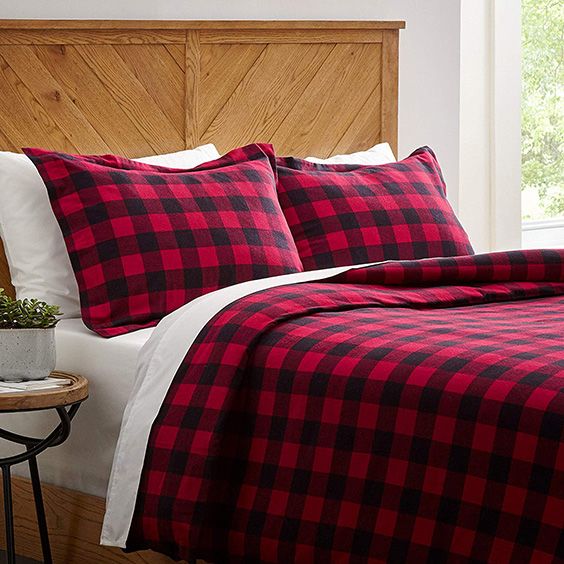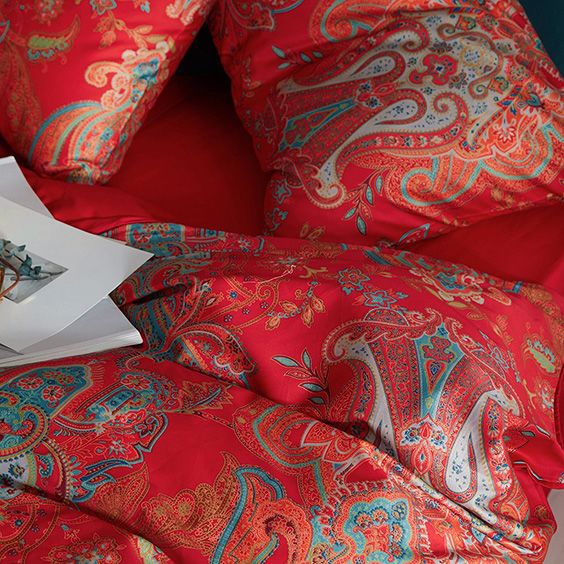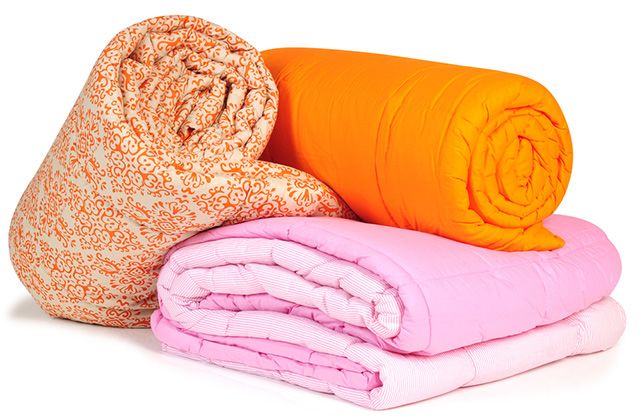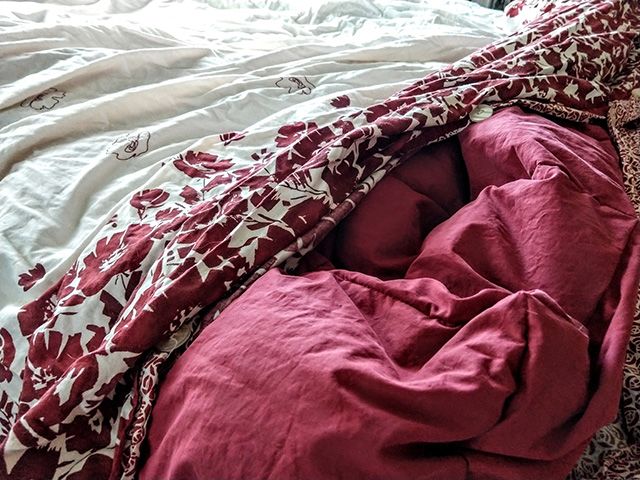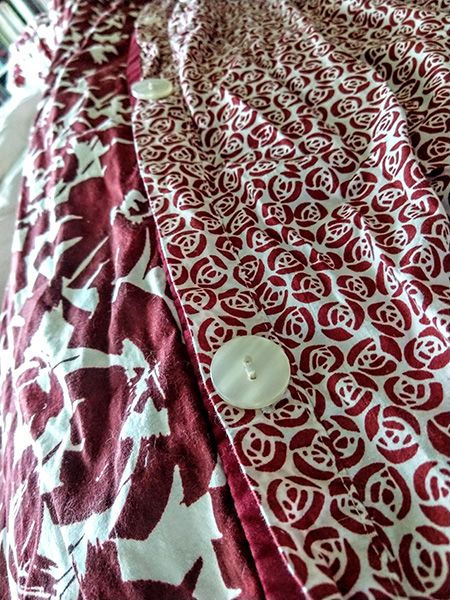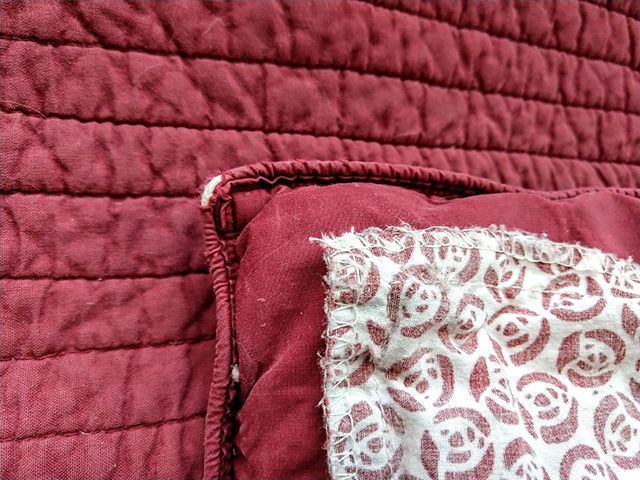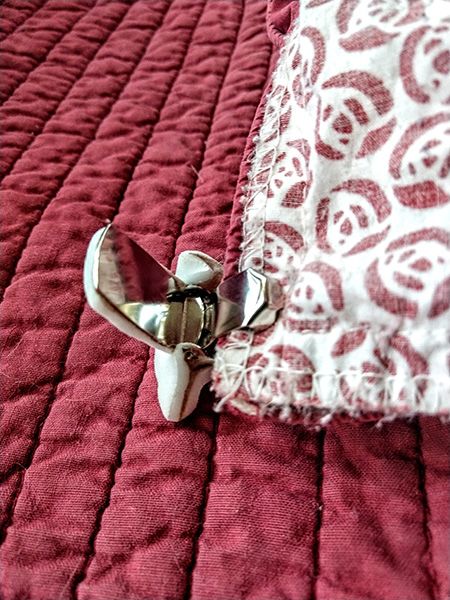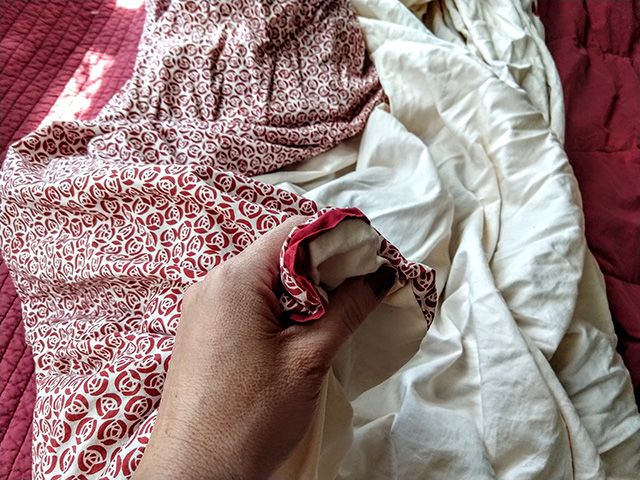Sometimes picking out your bedding choices can be just as difficult as finding the perfect bed and mattress combination. You want to match your decor, but also anticipate any changes you might make without having to spend to money on seasonal and matching purposes. Duvets, or comforters, are often popular choices due to their more lightweight design and the ability to use a cover with them for changes to interior design.
They also are typically a decent choice for year-round use, and layer well with quilts and sheets when additional insulation is needed. Duvet covers may seem like something that is not absolutely necessary, but once you understand their purpose you can’t deny their value. If you ever have needed to know how to use a duvet cover, and the easiest way to put it on–this is the article for you.
What is a Duvet?
First off, a duvet is a lightweight comforter that is filled with a lofty material–usually down and feathers, or a down alternative, micro-poly fiber. This type of fill is highly insulating in both cold and warm temperatures as they depend on the space created by air pockets–which also allows amazing breathability. They are generally very simple in nature and use a cotton casing that is baffled in some manner to keep the fill from shifting. Their lack of pattern and color choices make them ideal for use with a duvet cover.
You may be interested in: Luxury Duvet Covers
What is a Duvet Cover?
A duvet cover is like a pillowcase for your duvet or comforter. They cover your duvet and either button, snap, or zipper close to help keep your blanket protected and in place. Usually made from cotton, they come in a wide variety of prints and colors to match your decorative needs.
If you are worried your duvet will slip and slide around due to your nighttime movement, some covers have corner ties to secure your type of duvet even better. But even if you do not have the at the style of the duvet, or are using a comforter, you can easily pick up little duvet clips or snaps that secure to the inside corners to keep any movement from occurring.
You may be interested in: Best Duvet Covers: Choice for An Easy, Decorative Alternative
Why is Using a Duvet Cover a Good Idea?
Using a duvet and duvet cover combination is an excellent idea for a variety of reasons. To start, you don’t have to use it only with a duvet, you can use it with any lightweight comforter, or even quilt if desired. They do work best with a lighter, less dense option, however.
The wide array of colors and patterns allow you to change out your decor seasonally without having to redecorate. There is no need to go out to by a blanket or new comforter to match your changes, simply pick up a new duvet cover for a fraction of the price.
Washing and drying duvets and comforters can be a challenge, especially for larger sized beds. Avoid having to launder these larger, heavier bedding options by using a cover to protect your insulating blanket choices. It is much easier to wash what amounts to two sheets than an entire duvet.
Not only are they cost saving when you want to change the look of a room, but they also store very easily. Since they are approximately the same size as a flat sheet, all you have to do is fold and store without having to find room for added bulk.
You may want to read: Best Duvets
Step by Step: How to Put on a Duvet Cover The Traditional Way
You may want to check out: The Best Full-Sized Duvet Cover
Nobody really struggles to put a pillowcase on a pillow due to their manageable sizes. But how, exactly, do you stuff your larger, bulkier, and awkward duvet into what amounts to a giant pillowcase without creating unevenness, folds, and frustration? This step by step guide provides a quick and easy way to get the job done without feeling like you are stuffing a square peg into a round hole.
Hint: invest in those duvet corner clips, you will thank me later.
Step 1: Lay Out Duvet/Comforter
To start, lay your duvet or comforter out flat on your bed surface. It doesn’t have to be perfect but has at least a good third of it nice and flat and the short edge (and respective corners) easily reachable from the head or foot of your bed.
Step 2: Turn Duvet Cover Inside Out
Duvet covers have only one of the four sides open, which can be closed with a zipper or button of some sort. Make sure these are completely unzipped or unbuttoned. Then, turn your duvet cover inside out, making sure that the corners are nicely pushed out and not bunched up. I like to do this and then grab the bottom corners and give it a good shaking out to get it nice and even. Keep the edge seams in line with one another as well.
Step 3: Match Duvet and Cover Corners
Lay your cover over the top of your duvet and match the bottom corners (the side that doesn’t have the opening) to one another. If you have ties, tie these together. If you have clips, take a small part of each corner of your respective duvet and duvet cover and secure them together. Once you have these secure, pull up one side of the cover slightly and reach inside to grab hold of the respective corners.
If you have nothing to secure the cover to the duvet, that’s ok, simply pull up one side of the cover and reach inside to grasp hold of the corners securely (just don’t let go)!
Step 4: Flip Duvet Cover Over Duvet
Holding the corners tightly, now flip the cover right side out over the comforter. Give it a few shakes as if you are fluffing it out to help work the cover down the length of the duvet. This is where having the corners secured by something other than your hands can come in handy as you can let go to help manipulate the fit.
Step 5: Pull Down
Once the cover has completely enveloped the majority of the duvet, you can let go and pull the rest of it down to match up your corners. Stuff them into the respective areas and secure them as you did the other two if you have ties or clips. If not simply smooth them into place and zip or button your cover-up!
You may want to read: Best Duvet Insert
Conclusion
And that, folks, is all you have to do to avoid any sort of frustration in your use of a duvet cover. The use of clips of some sort is recommended, but not necessary since one your duvet is inside it usually stays put quite well. This technique also gets easier the more you do it, and there is no need to worry about the bulk of your comforter choice or difficulties in getting corners to match.

